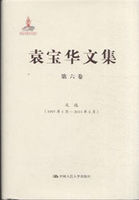The HAIRY-JOINTED MEADOW PARSNIP (Thaspium barbinode), another early bloomer, with pale-yellow flowers, most common in the Mississippi basin, may always be distinguished by the little tufts of hair at the joints of the stem, the compound leaves, and often on the rays of the umbels.
A yellow variety of the PURPLE MEADOW PARSNIP, which is popularly known as GOLDEN ALEXANDERS (T.trifoliatum var.aureum), confines itself chiefly to woodlands.The leaves are compounded of three leaflets, longer and more lance-shaped in outline than those of other yellow species.
FOUR-LEAVED or WHORLED LOOSESTRIFE; CROSSWORT(Lysimachia quadrifolia) Primrose family Flowers - Yellow, streaked with dark red, 1/2 in.across or less;each on a thread-like, spreading footstem from a leaf axil.
Calyx, 5 to 7 parted; corolla of 5 to 7 spreading lobes, and as many stamens inserted on the throat; 1 pistil.Stem: Slender, erect, to 3 ft.tall, leafy.Leaves: In whorls of 4 (rarely in 3's to 7's), lance-shaped or oblong, entire, black dotted.
Preferred Habitat - Open woodland, thickets, roadsides, moist, sandy soil.
Flowering Season - June-August.
Distribution - Georgia and Illinois, north to New Brunswick.
Medieval herbalists usually recorded anything that "Plinie saieth" with profoundest respect; not always so, quaint old Parkinson.Speaking of the common (vulgaris), wild loosestrife of Europe, a rather stout, downy species with terminal clusters of good-sized, yellow flowers, that was once cultivated in our Eastern States, and has sparingly escaped from gardens, he thus refers to the reputation given it by the Roman naturalist: "It is believed to take away strife, or debate between ye beasts, not onely those that are yoked together, but even those that are wild also, by making them tame and quiet...if it be either put about their yokes or their necks," significantly adding, "which how true, I leave to them shall try and find it soe." Our slender, symmetrical, common loosestrife, with its whorls of leaves and little star-shaped blossoms on thread-like pedicels at regular intervals up the stem, is not even distantly related to the wonderful purple loosestrife (q.v.).
Another common, lower-growing species, the BULB-BEARINGLOOSESTRIFE (L.terrestris; L.stricta of Gray) - blooming from July to September, lifts a terminal, elongated raceme of even smaller, slender-pedicelled, yellow flowers streaked or dotted with reddish; and in the axils of its abundant, opposite, lance-shaped, black-dotted leaves, long bulblets, that are in reality suppressed branches, are usually borne after the flowering season.Occasionally no flowers are produced, only these strange bulblets.In this state Linnaeus mistook the plant for a terrestrial mistletoe.This species shows a decided preference for swamps, moist thickets, and ditches throughout a range which extends from Manitoba and Arkansas to the Atlantic Ocean.
MONEYWORT, or CREEPING LOOSESTRIFE (L.Nummularia), a native of Great Britain, which has long been a favorite vine in American hanging baskets and urns, when kept in moist soil, suspended from a veranda, will produce prolific shoots two or three feet in length, hanging down on all sides.Pairs of yellow, dark-spotted, five-lobed flowers grow from the axils of the opposite leaves from June to August.One often finds it running wild in moist soil beyond the pale of old gardens from Pennsylvania and Indiana northward into Canada.Slight encouragement in starting runaways would easily induce the hardy little evergreen to be as common here as it is in England.
The LANCE-LEAVED LOOSESTRIFE (Steironema lanceolatum), most common in the West and South, although it is by no means rare in the northeastern States, produces either single blossoms or few-flowered, spreading, axillary clusters on slender peduncles, each unspotted, yellow corolla half an inch across or over; the petal edges as if gnawed by the finest of teeth; the pointed calyx segments showing between them.Sterile stamens in addition to the fertile ones characterize this clan.In moist soil it blooms from June to August.It is a strange fact that female bees of the genus Macropis have never been taken on plants outside the loosestrife connection.Here there appears to be the closest interdependence between flower and insect.Even in Germany, Muller found them by far the most abundant visitors, "diligently sweeping the flowers (L.vulgaris) and piling large masses of moistened pollen on their hind legs." He inclined to believe that such blossoms in this group as have spots or streaks on their petals - pathfinders for insect visitors - are largely dependent on them, and cannot easily fertilize themselves; whereas the unmarked blossoms, growing in such situations as are less favorable to insect visits, are regularly self-fertile.
BUTTERFLY-WEED; PLEURISY-ROOT; ORANGE-ROOT; ORANGE MILKWEED(Asclepias tuberosa) Milkweed family Flowers - Bright reddish orange, in many-flowered, terminal clusters, each flower similar in structure to the common milkweed (q.v.).Stem: Erect, 1 to 2 ft.tall, hairy, leafy, milky juice scanty.Leaves: Usually all alternate, lance-shaped, seated on stem.Fruit: A pair of erect, hoary pods, 2 to 5 in.long, at least containing silky plumed seeds.
Preferred Habitat - Dry or sandy fields, hills, roadsides.
Flowering Season - June-September.
Distribution - Maine and Ontario to Arizona, south to the Gulf of Mexico.













